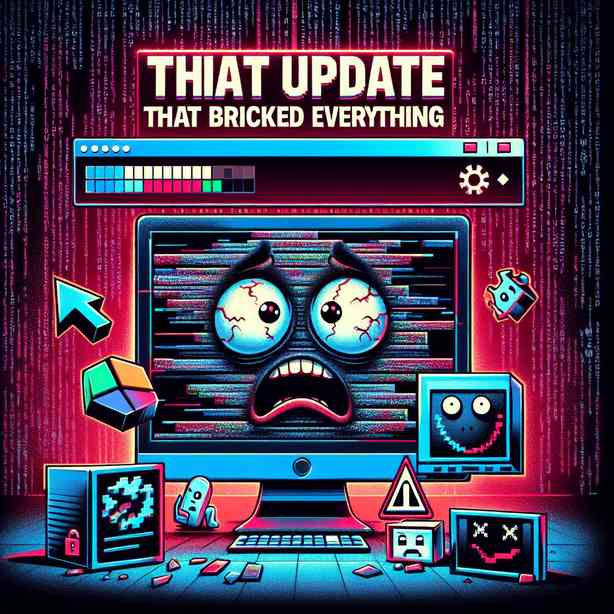
In recent times, the tech community has been abuzz with discussions surrounding a particular update known colloquially as “That Update That Bricked Everything.” This phrase encapsulates the collective frustration experienced by many users after a software update resulted in a widespread malfunction of devices. Understanding the implications and the unfolding events around this update provides crucial insights into the complexities of software development, user experience, and the importance of effective communication between manufacturers and consumers.
At its onset, this update was anticipated with a degree of excitement. It was expected to introduce several enhancements and features aimed at improving the overall performance and security of devices. Users often look forward to such updates, as they promise to refine existing functions, patch vulnerability issues, and provide support for newly emerging technologies. However, anticipation quickly turned to dismay when many users began reporting severe issues following the installation of the update.
The term “bricking” refers to the state of a device when it becomes non-functional due to software issues, rendering it about as useful as a brick. This unfortunate scenario unfolded on various platforms, affecting smartphones, tablets, laptops, and other smart devices. Reports flooded in from users who experienced devices unable to boot, loss of data, connectivity issues, and more. Such a widespread failure suggested systemic problems with the update’s deployment, prompting analysts and tech enthusiasts alike to dissect the situation.
From a technical perspective, updates often undergo rigorous testing in controlled environments to ensure compatibility and functionality across a range of devices. However, the complexities of software ecosystems mean that even minor changes can resonate in unexpected ways—especially when various device configurations, operating systems, and pre-existing data formats come into play. In this instance, it appears that the update may not have sufficiently accounted for the diversity of its user base, leading to cascading failures that affected numerous models and configurations.
The aftermath of the update led manufacturers and developers to scramble for solutions. Emergency patches were issued, and technical support teams were deployed in droves to assist users facing issues. This dynamic showcases the vital role of responsive customer service in maintaining brand loyalty and user trust. The speed at which a company responds to a crisis can significantly impact how customers perceive their commitment to quality and service.
In the world of technology, the relationship between users and providers is crucial. Transparent communication during a crisis can mitigate feelings of frustration and distrust. Users appreciate being informed about the cause of issues, the steps being taken to rectify them, and what measures are being implemented to prevent such occurrences in the future. A well-crafted communication strategy can turn a negative experience into an opportunity for building rapport and showcasing a company’s dedication to its clientele.
Moreover, the incident highlighted the importance of beta testing and community feedback. Organizations that actively engage users in pre-release feedback tend to have a better understanding of how updates will perform across varied devices and setups. By crowdsourcing feedback, companies can identify and address potential issues before they escalate to a larger scale. It is clear that listening to the voices of the community can foster innovation and enhance user satisfaction.
As discussions about “That Update That Bricked Everything” continue, we also witness a broader conversation about the ethics of software development and the price of convenience. In our fast-paced digital world, the allure of instant updates may overshadow the need for caution and sufficient testing. This moment serves as a reminder that the user experience must take precedence over pushing out updates at breakneck speed, as the repercussions of hasty decisions can lead to significant backlash and loss of consumer trust.
In conclusion, this episode surrounding “That Update That Bricked Everything” illustrates the intricate balance between technological advancement and user satisfaction. It serves as both a warning and a lesson for tech companies worldwide. The need for thorough testing, effective communication, and a responsiveness to user feedback cannot be overstated. As the tech landscape continues to evolve, so too must the strategies employed by manufacturers to ensure that users remain at the heart of their operations. By embracing these principles, companies can not only avoid future mishaps but also cultivate a loyal customer base that feels valued and acknowledged.


